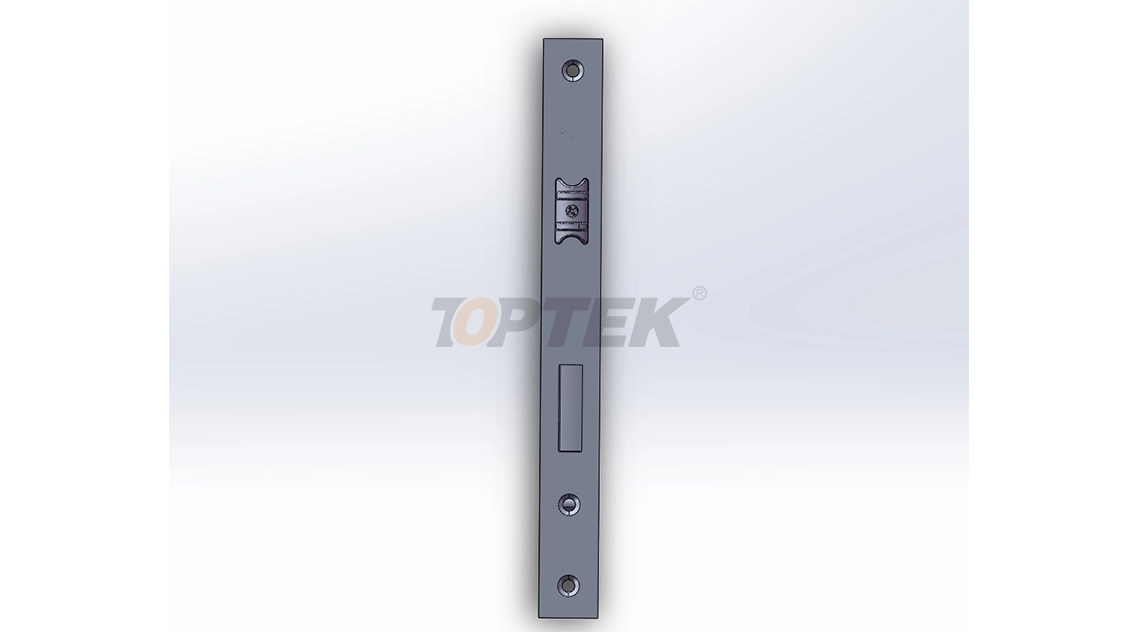In the world of commercial hardware, selecting the right lock for the right door is critical for security, functionality, and code compliance. Two terms that often cause confusion are "entry lockset" and "classroom lockset." While they may look similar to the untrained eye, they are designed for fundamentally different purposes. Understanding their differences is essential for architects, facility managers, and building owners. At the heart of this discussion, especially in educational and commercial settings, is a specific type of hardware: the Classroom Mortise Lock.
This article will demystify these terms, explore their unique functions, and explain why choosing correctly matters for your building's safety and operation.
Understanding the Basic Function: Privacy vs. Public Access
The core difference lies in the intended use of the room behind the door.
· Entry Lockset: Designed for rooms requiring privacy. Think of a private office, a restroom, or a storage closet. The key function is to allow an occupant to lock the door from the inside for privacy and then unlock it to exit. From the outside, it always requires a key to gain entry.
· Classroom Lockset: Designed for rooms requiring controlled public access and emergency egress. Its primary function is to allow authorized personnel (with a key) to secure a room from the outside while ensuring that people inside can always exit immediately in an emergency without needing a key. It is the standard for classrooms, conference rooms, and other high-occupancy spaces.
Deep Dive: The Classroom Mortise Lock
The Classroom Mortise Lock is the most common hardware type used to achieve this specific function. A "mortise" lock is one where the lock mechanism is installed within a pocket (the mortise) cut into the edge of the door, making it exceptionally strong and durable—a necessity for high-traffic commercial doors.
The defining feature of a classroom lockset is its outside trim (the part you touch). It will typically have a keyed cylinder on the outside. On the inside, it will have a fixed lever or knob. This fixed handle cannot be locked or turned from the inside. It is only used to retract the latch and open the door.
How a Classroom Lockset Works:
1.From the Outside (Security): An authorized teacher or staff member uses a key to lock or unlock the door. When locked, the outside lever is disabled, preventing entry.
2.From the Inside (Egress): At any time—whether the door is locked or unlocked from the outside—a person inside can simply turn the inside lever (or push the knob) and exit. This one-motion, free-egress operation is not just a convenience; it is a requirement of international building codes and life safety standards like NFPA 101.
This function is sometimes called "passage function on the inside, keyed entrance on the outside."

Deep Dive: The Entry Lockset
An entry lockset, often referred to as an "office" or "privacy" lockset, has a different operational sequence. Like the classroom lock, the outside trim usually has a keyed cylinder. However, the critical difference is on the inside trim.
The inside lever will feature a locking mechanism—typically a thumbturn or a push-button. This allows the occupant to manually lock the door from the inside for privacy.
How an Entry Lockset Works:
1.From the Inside (Privacy): An occupant pushes a button or turns a thumbturn to engage the lock. This immediately secures the door, preventing entry from the outside.
2.Exiting the Room: To exit, the occupant must first unlock the door by disengaging the thumbturn or button. Then they can operate the lever to open the door. This two-step process is acceptable in a private office but is a major safety violation in a classroom or other assembly area.
3.From the Outside (Access): The door always requires a key for entry if it is locked from the inside.
Key Differences at a Glance
| Feature | Classroom Lockset | Entry Lockset |
| Primary Use | Classrooms, conference rooms, labs, assembly halls | Private offices, restrooms, storage closets |
| Inside Locking | No. The inside lever is always free for immediate egress. | Yes. Features a thumbturn, button, or toggle to lock from inside. |
| Exiting Process | One motion: Turn lever and exit. | Two motions: Unlock, then turn lever to exit. |
| Outside Access | Key required when locked. | Key required when locked. |
| Life Safety | Fully compliant with building codes for emergency egress. | Not compliant for high-occupancy or public egress doors. |
| Internal Mechanism | Often a mortise lock for durability. | Can be mortise, cylindrical, or tubular. |
Why the Distinction Matters: Safety, Security, and Codes
Choosing the wrong lockset can have serious consequences:
1.Life Safety Risk: Installing an entry lockset on a classroom door is dangerous. In a panic situation like a fire, students and teachers cannot be fumbling with a thumbturn to unlock the door. The one-motion egress provided by a classroom lockset is non-negotiable and is rigorously enforced by fire marshals and building inspectors.
2.Security Risk: Conversely, using a classroom lockset on a CEO's private office door would be a security flaw. It offers no way for the occupant to ensure privacy from the inside, as anyone could walk in at any time unless the door was locked from the outside with a key—an impractical daily solution.
3.Code Compliance: Building codes are very specific about which doors require what type of hardware. Failing to meet these codes can result in failed inspections, fines, and orders to replace all non-compliant hardware at great expense.
Conclusion: Choosing the Right Lockset
The choice between an entry lockset and a classroom lockset boils down to a simple question: Does this room require privacy or controlled public access with guaranteed emergency egress?
· For privacy in low-occupancy rooms (offices, closets, bathrooms), choose an Entry Lockset.
· For security and safety in high-occupancy public rooms (classrooms, meeting rooms, libraries), the Classroom Mortise Lock is the industry-standard, code-compliant solution.
Always consult with a qualified architectural hardware consultant or locksmith to ensure your door hardware meets all applicable safety and security standards for your specific application. Investing in the correct hardware from the start ensures the well-being of building occupants and protects your investment for years to come.
Classroom Mortise Lock
CE Mortice Lock
ANSI Mortise Lock
English
العربية
Français
Русский
Español
Português
Deutsch
italiano
日本語
한국어
Nederlands
Tiếng Việt
ไทย
Polski
Türkçe
አማርኛ
ພາສາລາວ
ភាសាខ្មែរ
Bahasa Melayu
ဗမာစာ
தமிழ்
Filipino
Bahasa Indonesia
magyar
Română
Čeština
Монгол
қазақ
Српски
हिन्दी
فارسی
Kiswahili
Slovenčina
Slovenščina
Norsk
Svenska
українська
Ελληνικά
Suomi
Հայերեն
עברית
Latine
Dansk
اردو
Shqip
বাংলা
Hrvatski
Afrikaans
Gaeilge
Eesti keel
Māori
සිංහල
नेपाली
Oʻzbekcha
latviešu
অসমীয়া
Aymara
Azərbaycan dili
Bamanankan
Euskara
Беларуская мова
भोजपुरी
Bosanski
Български
Català
Cebuano
Corsu
ދިވެހި
डोग्रिड ने दी
Esperanto
Eʋegbe
Frysk
Galego
ქართული
guarani
ગુજરાતી
Kreyòl ayisyen
Hausa
ʻŌlelo Hawaiʻi
Hmoob
íslenska
Igbo
Ilocano
Basa Jawa
ಕನ್ನಡ
Kinyarwanda
गोंगेन हें नांव
Krio we dɛn kɔl Krio
Kurdî
Kurdî
Кыргызча
Lingala
Lietuvių
Oluganda
Lëtzebuergesch
Македонски
मैथिली
Malagasy
മലയാളം
Malti
मराठी
ꯃꯦꯇꯥꯏ (ꯃꯅꯤꯄꯨꯔꯤ) ꯴.
Mizo tawng
Chichewa
ଓଡ଼ିଆ
Afaan Oromoo
پښتو
ਪੰਜਾਬੀ
Runasimi
Gagana Samoa
संस्कृत
Gaelo Albannach
Sepeti
Sesotho
chiShona
سنڌي
Soomaali
Basa Sunda
Wikang Tagalog
Тоҷикӣ
Татарча
తెలుగు
ትግንያውያን
Xitsonga
Türkmençe
संस्कृत
ئۇيغۇرچە
Cymraeg
isiXhosa
ייִדיש
Yorùbá
isiZulu


































